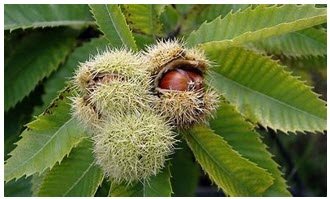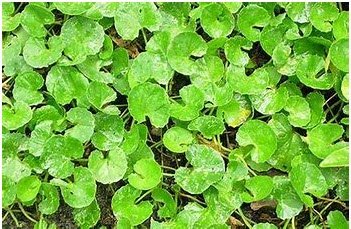All In Vein Salve
Mother Nature has your Back.
Is formulated, to enhance vascular wall integrity and repair veins and capillaries. To enhance cellular repair and lock in moisture.
This salve has been formulated by a qualified Herbalist/Naturopath, harnessing all the powers of Mother Nature, combined with empirical and scientific research, as well as ancestral wisdom, to enhance vascular wall integrity and repair veins and capillaries. Helps soothe and heal haemorrhoids, anal fissures and varicose veins.
The completely natural salve will tone the skin, help with cellular repair, lock in moisture and may be used for cellulite, spider veins, whilst also acting as a beauty balm, plumping the skin with an ultra-sheen. Can be used internally and externally from top to toe, with a refreshing yarrow essential oil fragrance.
Directions:
Apply twice daily to affected areas.
Ingredients:
50gms
Organic Tallow/Suet
100% Pasture raised, grass fed, hormone free, ethically farmed to provide diversity and sustainability. (Tasmania)
Fatty Acids: stearic, oleic, palmitic acid, conjugated linoleic acid. Fat soluble vitamins and antioxidants: A, D E, K2
Research studies have proven, that the level of moisturising from animal fats was far superior to plant-based oils. This is due to fat soluble activators only found in animal fats. Tallow resembles the natural sebum in our skin, ensuring absorption without irritation. The fatty acids, (Omega 3,6,7 and 9) have the ability to easily and deeply penetrate into the skins dermis to replenish lost moisture without clogging the pores and to also prevent transdermal water loss whilst also providing a protective layer. The anti-oxidants and fat-soluble vitamins provide healing and help to repair oxidative damage.
Organic infused and essential oils
Yarrow
Achillea millefollium; aerial parts
Yarrow or historically know as Wound Healer is a native European plant. This plant is poorly researched and it is the empirical knowledge and historical uses for its ability to staunch bleeding in the battlefields and kitchen gardens that we find our evidence.
Achilles, the Greek God was thought to use yarrow to heal wounds, hence the botanical name.
The Alkaloids, (achilleine) and flavonoids are though responsible to help arrest internal and external bleeding. Combined with the astringents it is reputed to improve venous circulation and tone varicose veins. It is also thought to be highly beneficial for cellulite.
Key Actions:
Antispasmodic, staunches bleeding, internally and externally, anti-inflammatory, lowers blood pressure, tones the blood vessels without drying.
Comfrey
Symphytum officinale ariel parts, leaves
Comfrey also called knitbone, is extremely high in ‘allantoin’. This compound is well researched as a cell proliferant, that helps repair damaged tissue and has been found to reduce inflammation from sprains, pulled muscles and ligaments, fractures and osteoarthritis. Thousands of years of empirical knowledge has proven, ‘allantoin’ encourages ligaments and bones to knit together firmly, to strengthen bone growth and also helps to grow new skin cells quickly. So effective, it is advised not to use it with bandages, as the skin will regrow over the dressing.
Comfrey has been scheduled for internal use due to the presence of pyrrolizidine alkaloids found in the root, which may possibly cause liver damage. The arial parts are considered safe and these alkaloids are virtually absent in these parts of the plant.
Actions: Heals bones and wounds, Anti-inflammatory, Demulcent, Astringent.
Lanolin
Lanolin is secreted by the sheep’s sebaceous glands. This wool wax helps prevent evaporation of water from the skin. It also has antibacterial qualities which help to protect the sheep from fungal/bacterial infections. Lanolin is a similar chemical composition to our skin; it forms an emulsion with water that’s easily absorbed by the skin and this stops the dehydration of the skin. So safe, it’s been used as the most effective nipple balm whilst breastfeeding new born babies.
Herbal Concentrates:
Horsechestnut
Aesculus hippocastanum, seeds
This ornamental tree, is native to the Balkans extending through Western Asia to the Himalayans. It is the triterpenoid saponin, aescin, which is thought to be the key constituent to produce this beneficial action as a venous tonic. Highly valued for treating haemorrhoids, and rectal complaints. varicose veins, venous congestion and venous ulcers. It also reduces fluid retention from leaking distended veins.
Key Actions
Venous tonic, increases capillary resistance, and decreases permeability, reduces fluid retention, antioxidant, anti-inflammatory, rectal neuralgia.
Maritime Pine
Pinus pinaster Aiton, bark
Maritime Pine Bark is a native of the Mediterranean region. It was originally used to treat scurvy due to the high Vitamin C content, however the bark has been intensely researched for the rich sources of (OPC’s) which are basically a form of bioflavonoids, predominately oligomeric; proanthocyanins’, a rich source of natural polyphenols.
Traditionally used to treat wounds, dating back to 400BC, this high researched plant is now used to treat disorders of the vascular system, due to the antioxidant and inflammatory properties. A decoction of the bark of maritime pine is considered to be stronger than the needles.
Key Actions:
Antioxidant, anti-inflammatory, cardioprotective, vulnerary, antimicrobial, fluid retention, chronic venous insufficiency, venous leg ulcers.
Butchers Broom
Ruscus aculeatus; aerial parts and rhizome
This plant is a protected species, and grows wild around Europe, Western Asia and Northern Africa.
The plant was used as a broom in butchers’ shops until the 20th Century, hence the name.
There is a growing body of clinical evidence that indicates, extracts of Butchers broom applied to varicose veins caused the veins to contract measurably.
It is the Saponin glycosides, (ruscogenin, aeoruscogenin), which specifically cause the contraction of the blood vessels. varicose veins and haemorrhoids.
Key Actions:
Venous tonic, increases blood flow, anti-inflammatory, prevents tensing of blood vessels and increases contraction of blood vessels.
Gota Kola
Centella asiatica, aerial parts
Gota kola is native to India, used extensively in auverdic medicine.
Traditionally used as a paste to treat leprosy and skin disorders.
It is the Triterpenoid saponin (asiaticicoside), which has been researched and found to speed collagen renewal, tissue repair, the laying down of new healthy blood vessels, and to increase anti-oxidant levels within wounds/tissues for healing.
Key Actions:
Venous tonic, peripheral vasodilator, wound healing, anti-oxidant, collagen formation, tissue repair.
Homoeopathic: Calcarea Fluor 6C. Calcium Fluoride,
is contained in the elastic fibres of the skin, blood vessels, connective tissue, bones and teeth. A lack of Calc Fluor creates a relaxed condition. This can lead to a hardening or swelling of the tissues. Used in the treatment of dilated or weakened blood vessels, such as those found in haemorrhoids, varicose veins, hardened arteries and glands. Also considered in uterine displacements, teeth loose in their sockets, sluggish circulation, muscular weakness, and ailments of tendons, ligaments, and fibrous tissue. I have used a low dose 6C for chronic conditions which require gentle stimulation with the least aggravation.
Note: This formulation has been updated, due to research that confirms animal fats are far superior as a moisturising base for healing salves. At Medicinal Botanix we believe in ethically farmed and organic pasture raised cattle, utilizing ancestral wisdom, whereby, the web of life and the whole ecosystem is sustainably managed without waste or pollution, or cruelty to animals.
The nutritional and energy value of pasture raised, ethically farmed animals is also far superior to factory farmed caged animals fed on genetically modified grains and antibiotics in cruel environments.
Cost $40 Postage $10
References;
A Clinical Guide to Blending Liquid Herbs: Herbal Formulations for the Individual Patient” 2003 Kerry Bone Elservier Science (USA)
A Modern Herbal; 1994 Mrs M. Grieve F.R.H.S. First published in 1931 by Johnathan Cape Ltd. Great Britain. A Cresset Press Book
E/S/C/O/P Monographs Second Edition supplement 2009
The Encyclopedia of Medicinal Plants, 2001 Andrew Chevallier, Dorling Kindersley Pty Ltd
. Pycnogenol® is a unique natural health ingredient. Horphag. C2021. (accessed 17 June 2021). Available from https://www.pycnogenol.com/ about/pycnogenol
Murray M. Grape seed extract and other sources of procyanidolic oligomers. In: Murray M. The Healing Power of Herbs. 2nd ed. California:Prima Publishing 1995:185.
https://misumiskincare.com/blogs/news/tallow-for-skin-the-good-and-the-bad-sides-of-using-tallowhttps://onlinelibrary.wiley.com/doi/abs/10.1111/ics.12173https://www.vitalorigin.com.au/insights/https://www.globalfoodjustice.org/nutrition/the-brain-needs-animal-fathttps://www.resonanceschoolofhomeopathy.com/blog/low-potency-prescribing








